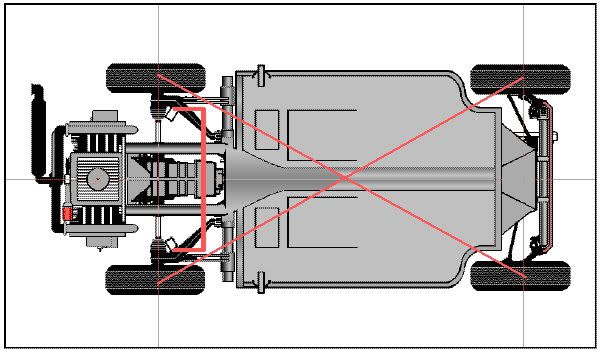Thanks guys.

At the moment there is a strong 1776 going into the car, running twin Kadrons, a lightened flywheel, a complicated electronic ignition comprising Rabbit, Kombi 1.9, and an MSD 5 system, and a Serpentine belt.
The Serpentine will probably get pulled due only to manufacturing issues with it.
I forgot to mention that my chassis builder has fitted 22mm Type 3 torsion bars at the back. What is the issue with this, with regards to your comment above?
I'm far from an expert on all of this, so please don't get the impression I'm asking pointless Qs - I really am curious.

Is an adjustable front sway bar something I should aim to save for?
I'm not a racer - probably only due to finances (this car has taken a pounding on my savings) - but I do readily admit that I drive my bug like an absolute Hooligan. I'm primarily a split bus guy, and my bug is my toy.
At the moment I'm driving a relative's mild 1600 '66 bug with a slight drop, and camber compensator.
I'll pull the rear sway bar and see how things go once the bug is running - hopefully next week. Learn something new every day.

I also want to get rid of my EMPI 8s, due to rubbish offset - my rear wheels stick out a good inch or so past the fenders. At the moment they have 195s on with a ridiculous 40 profile. What would you recommend I fit to the bug? ...and pressures?
I'll have the local tyre shop set as much negative camber as possible up front. Thanks. Excuse the daft question, but what are offset adjusters?
My beam is running sway-a-way style adjusters, top and bottom. No drop spindles yet - cost. They've been welded in at an angle to only give downwards adjustability, and at the moment are set to their lowest.
I'll measure the drop and report back. The car is not at my place atm.
At the moment I have Prothane urethane tranny mounts fitted, and if they break, a spare set of CB Performance Rhino tranny mounts. Do you recommend urethane at the rear, and solid up front?
The noise doesn't phase me in the least. I have the use of other cars for transport. I have a seriously noisey exhaust anyways.
I have urethane shift and steering couplers too, which I'm told will also make it a bit louder inside. I've also pulled all of the engine bay tarboard out, in lieu of insulation inside, up the dogbox.
I may need to fit insulation in the engine bay again if it's really loud. I'll wait and see.
I plan on surprising more than a few people at the traffic lights.

...but getting sideways is more fun.

Cheers, Nic


